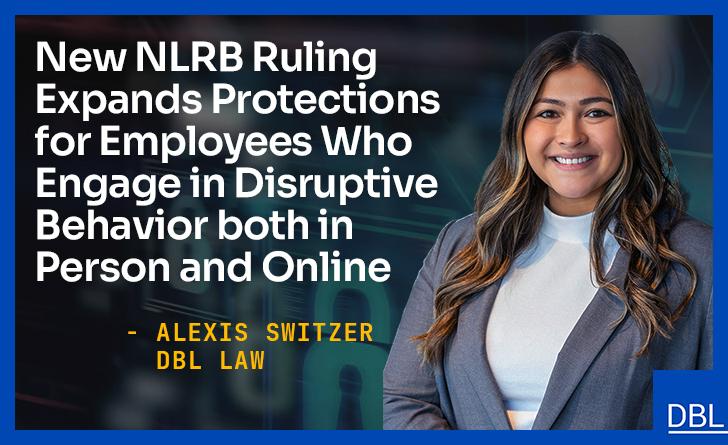Section 7 of the National Labor Relations Act (“NLRA”) grants employees the right to engage in concerted protected activity to obtain better terms and conditions of employment, form a union, collectively bargain, or refrain from participating in such activities. The NLRA applies to any employer – union and non-union workforces included. Employers are specifically prohibited from taking adverse action against employees who seek to assert their Section 7 rights. Employers are often confronted with situations in which an employee engages in an outburst or abusive conduct during otherwise protected activity. For example, the use of profane, sexually harassing, or racially inappropriate statements during collective bargaining situations, on a social media post, or on a picket line.
In 2020, the NLRB issued its opinion in General Motors adopting the Wright Line test, which utilized a burden-shifting framework of proof. This test focuses on the motive of the employer in taking adverse action against employees. Thus, employers could overcome an allegation of unlawful conduct by demonstrating that they would have treated the employee the same whether or not they were engaged in Section 7 protected activity.
The Board’s recent decision in Lion Elastomers, LLC II, scrapped the Wright Line test and reinstated previous “setting-specific standards aimed at deciding whether an employee has lost the Act’s protections.” In its, “attempt to strike a balance between the Section 7 rights of employees and the legitimate interests of employers,” the Board explained that disputes over wages, hours, and working conditions are among the disputes most likely to engender ill feelings and strong responses, and certain employee conduct is inseparable from the statutorily protected activity during which it occurs.
Thus, the Board reinstated three different tests, which now require employers to consider the context in which the employee conduct occurred prior to taking disciplinary action:
(1) Employee Conduct Towards Management in the Workplace:
- Such conduct should be evaluated under Atlantic Steel, which utilizes a four-factor test that the Board will review to determine whether an employee’s conduct during Section 7 activity loses the protection of the Act: (1) the place of the discussion; (2) the subject matter of the discussion; (3) the nature of the employee’s outburst; and (4) whether the outburst was, in any way, provoked by an employer’s unfair labor practice.
(2) Social Media Posts and Conversations Among Employees in the Workplace:
- Such conduct will be evaluated under a totality of the circumstances test, which considers all of the relevant surrounding context.
(3) Picket-Line Conduct
- Such conduct will be evaluated under Clear Pine Mouldings, which analyzes whether, under all of the circumstances, non-strikers reasonably would have been coerced or intimidated by the picket-line conduct.
Importantly, under all of the operative setting-specific standards, the first step of the analysis requires an evaluation of whether an employee (or employees) engaged in Section 7 activity. The dissenting opinion expressed concern that these tests give employees significant leeway to engage in abusive conduct while restricting employers’ rights to maintain order and respect.
Given these significant changes, employers should take practical steps to ensure they are aligned with the NLRB’s new standards. These situations require careful legal analysis, and seeking counsel to ensure the careful assessment of the context and content of any outburst that occurs prior to issuing discipline or terminating employment is a suggested best practice.





